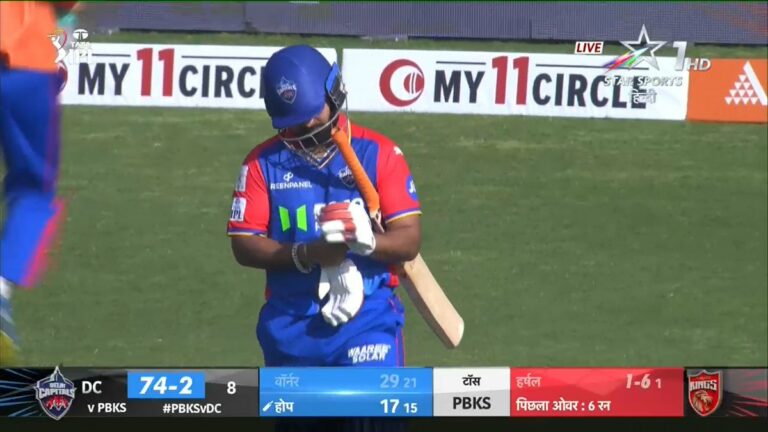Reddy Anna Book: How to Bet on Cricket’s Player Who Will Score the Most Boundaries in the Match
Cricket betting has evolved beyond simple match outcomes, with player-specific markets gaining significant popularity among enthusiasts. One particularly intriguing betting option involves predicting which player will score the most boundaries in a match. The Reddy Anna Book provides valuable insights and analytical tools that help bettors navigate this specialized market effectively. Understanding how to approach these bets requires a combination of statistical analysis, player profiling, and situational awareness.
When considering boundary scorers, several key factors come into play. Batting position significantly influences a player’s opportunity to score boundaries throughout the innings. Openers typically face the most deliveries, giving them more chances to clear the ropes or find gaps for fours. However, middle-order batsmen often enter during powerplays or when field restrictions are lifted, presenting different boundary-scoring opportunities. The Mahadev Book ID helps bettors analyze historical performance data across various batting positions, providing context for evaluating boundary potential.
Player form represents another crucial element in boundary prediction. Recent performances, especially against similar bowling attacks or in comparable conditions, offer valuable indicators of a player’s current capability. The Reddy Anna Book tracks these patterns meticulously, allowing bettors to identify players who consistently demonstrate strong boundary-hitting ability regardless of match situations. This information proves particularly useful when assessing players who might be returning from injury or experiencing temporary dips in form.
The match context also plays a vital role in boundary scoring predictions. Factors such as pitch conditions, weather forecasts, and opposition strength directly impact a player’s ability to score boundaries. For instance, flat pitches with true bounce generally favor aggressive stroke-makers, while seaming tracks might restrict boundary opportunities. The Reddy Anna Book incorporates these variables into its analysis, helping bettors make informed decisions about player potential in specific match scenarios.
Understanding team strategies further enhances boundary betting accuracy. Some teams employ designated hitters who focus primarily on clearing the ropes, while others distribute boundary-scoring responsibilities across their lineup. Recognizing these tactical approaches helps bettors identify players whose roles specifically involve maximizing boundary counts. The Reddy Anna Book provides detailed breakdowns of team strategies and player roles, offering comprehensive insights into how different sides approach boundary accumulation throughout matches.
Analyzing Player Profiles for Boundary Potential
Evaluating individual players’ boundary-scoring capabilities requires a systematic approach that considers multiple performance metrics and contextual factors. Batting statistics serve as the foundation for this analysis, with strike rates and boundary percentages providing initial indicators of a player’s power-hitting ability. Players maintaining strike rates above 130 in T20 cricket typically demonstrate strong boundary-scoring potential, especially when combined with high conversion rates of dot balls into scoring shots. The Reddy Anna Book compiles these statistics across various formats and conditions, enabling bettors to identify consistent boundary threats.
Batting technique represents another crucial aspect of boundary analysis. Players with strong bottom-hand dominance often excel at hitting sixes, while those with precise footwork and timing can consistently find gaps for fours. The Reddy Anna Book includes detailed technical assessments of top international players, highlighting their strengths in different scoring areas. For example, left-handed batsmen frequently benefit from angles created against right-arm bowlers, while right-handers might exploit leg-side gaps more effectively against left-arm spin.
Historical performance against specific opposition and in particular venues offers valuable insights into boundary-scoring potential. Some players consistently perform better against certain bowling attacks or thrive in specific stadium conditions. The Reddy Anna Book maintains comprehensive records of these patterns, revealing tendencies that might not be immediately apparent through basic statistics alone. A batsman’s record at small grounds like Sharjah or large stadiums like the Melbourne Cricket Ground can significantly influence their boundary-scoring expectations.
Fielding restrictions and powerplay regulations create additional opportunities for boundary scoring. Players who excel during these periods often possess specific skills that capitalize on field placement limitations. The Reddy Anna Book analyzes powerplay performances separately, identifying batsmen who maintain high boundary rates even under pressure. This information helps bettors assess a player’s ability to adapt their game according to match situations and fielding constraints.
Injury history and fitness levels also impact boundary-scoring potential. Players returning from injuries might initially struggle to generate power for maximum shots, while those in peak physical condition can maintain aggressive intent throughout their innings. The Reddy Anna Book tracks player fitness metrics and recovery progress, providing up-to-date information on physical readiness for boundary accumulation. This data proves particularly valuable when evaluating older players or those managing chronic conditions while maintaining high performance standards.
Strategic Approaches to Boundary Betting Markets
Developing effective betting strategies for predicting top boundary scorers requires careful consideration of multiple variables and market dynamics. Successful bettors typically employ a layered approach that combines fundamental analysis with market timing and risk management techniques. One primary strategy involves creating a shortlist of potential candidates based on pre-match analysis, then monitoring odds movements and team news before finalizing selections. This method allows bettors to remain flexible while maintaining a structured decision-making process throughout the betting cycle.
Market efficiency varies significantly across different betting platforms and time periods. Early markets often present value opportunities as bookmakers adjust their odds based on incoming information. Savvy bettors using resources like the Mahadev Book ID system can track these fluctuations, identifying discrepancies between perceived probabilities and actual likelihoods. By comparing odds across multiple operators and analyzing historical pricing patterns, they can spot favorable conditions for placing wagers on specific players.
Position sizing and bankroll management represent crucial elements of successful boundary betting strategies. Rather than allocating equal stakes to all selections, experienced bettors implement tiered staking plans based on confidence levels and market conditions. They might place larger wagers on players with proven boundary-hitting records in favorable conditions while maintaining smaller positions on higher-risk options. This approach helps balance potential returns with acceptable risk levels across their betting portfolio.
Understanding the relationship between different betting markets enhances overall strategy effectiveness. For instance, combining boundary scorer bets with total boundary markets creates hedging opportunities that reduce overall risk exposure. Bettors might back a specific player to score the most boundaries while simultaneously wagering on over/under markets for total boundaries, creating a balanced position that accounts for various possible outcomes. The Mahadev Book ID system facilitates this multi-market approach by providing real-time updates across different betting options.
Analytical tools and statistical models play an increasingly important role in modern boundary betting strategies. Many successful bettors develop proprietary rating systems that incorporate various performance metrics, venue characteristics, and situational factors. These models help quantify players’ boundary-scoring potential under different conditions, providing objective assessments that complement subjective judgment. Regular refinement of these analytical frameworks ensures they remain relevant as playing conditions and strategies evolve over time.
Responsible Betting Practices in Player-Specific Markets
Engaging in player-specific betting markets requires heightened awareness of responsible gambling principles due to the increased complexity and variability involved. Setting clear limits on both financial exposure and number of selections per match stands as the primary safeguard against excessive risk-taking. Experts recommend restricting player-specific bets to no more than three selections per match, ensuring focused analysis and manageable risk levels. This disciplined approach helps prevent impulsive decisions driven by short-term results or emotional responses to specific player performances.
Time management becomes particularly crucial when dealing with player-specific markets, as these bets require continuous monitoring of match developments and player progress. Establishing defined periods for pre-match analysis, in-play tracking, and post-match review prevents betting activities from interfering with personal responsibilities. Many experienced bettors use tools like the Mahadev Book ID system to set automated alerts for key events or milestones, reducing the need for constant manual monitoring while maintaining control over their betting activity.
The psychological aspects of player-specific betting demand special attention, as individual performances can fluctuate dramatically within matches. Developing coping mechanisms for handling unexpected outcomes proves essential for maintaining mental well-being. Some bettors implement mandatory cooling-off periods after significant wins or losses on player markets, preventing chasing losses or becoming overconfident based on single results. Others maintain detailed records of player-specific bets, analyzing long-term trends rather than focusing on isolated performances.
Regular self-assessment helps identify potential warning signs of problematic gambling behavior in player markets. Tracking betting patterns, emotional responses to results, and time spent analyzing individual players enables early detection of concerning trends. Resources like the Mahadev Book ID system offer tools for monitoring betting activity and setting automatic limits on deposits and wagers across different player markets. These features help maintain control and provide additional layers of protection against excessive gambling on individual performers.
Professional organizations and support groups offer valuable assistance for those seeking guidance on responsible gambling practices in player-specific markets. Many platforms provide access to counseling services, educational materials, and self-exclusion options for individuals who recognize the need for intervention. Engaging with these resources demonstrates maturity and responsibility in managing betting activities, ensuring that player-specific betting remains an enjoyable and controlled hobby rather than a source of stress or financial difficulty.
Career Opportunities in Player-Specific Betting Analysis
The growing sophistication of cricket betting markets has created diverse professional avenues within player-specific analysis and sports analytics. Individuals interested in pursuing careers related to player performance prediction can explore various roles that combine statistical expertise with deep cricket knowledge. Data scientists specializing in player analytics represent one prominent career path, working with betting companies to develop predictive models that forecast individual player performances across different match scenarios. These professionals utilize advanced machine learning algorithms to process vast amounts of player data, identifying patterns in boundary-scoring tendencies and developing sophisticated rating systems for different playing conditions.
Sports analysts focusing on player-specific markets represent another viable career option. These experts work with media organizations, betting platforms, and consultancy firms to provide detailed breakdowns of player capabilities and predict performance outcomes. Their work often involves collaborating with resources like the Reddy Anna Book to gather accurate information and present comprehensive analyses to clients and audiences. The demand for knowledgeable commentators who can explain complex player-performance concepts in accessible terms continues to grow, particularly with the expansion of specialized betting content and analysis platforms.
Betting consultancy firms actively seek specialists who can advise clients on strategic approaches to player-specific markets. These professionals develop personalized betting strategies, conduct risk assessments, and provide ongoing support to serious bettors focusing on individual player performances. Their work involves not only analyzing player data but also understanding market dynamics and psychological factors affecting player performance. Some consultants specialize in specific aspects of player analysis, such as boundary prediction or powerplay performance evaluation, leveraging their expertise to offer targeted advice and improve client outcomes in player-specific markets.
Technology companies serving the betting industry require skilled professionals to develop and maintain advanced analytical tools for player performance prediction. Software developers with knowledge of cricket analytics create applications that process real-time player data, calculate dynamic odds, and provide users with interactive interfaces for player-specific betting markets. These positions often demand a combination of technical skills and sports knowledge, making them ideal for individuals passionate about both fields. The integration of artificial intelligence and machine learning in player analysis has further expanded opportunities in this sector, particularly in developing predictive models for boundary-scoring potential.
Educational institutions and training centers increasingly offer specialized courses in sports analytics and player performance evaluation. Qualified professionals can pursue teaching positions or develop training programs that prepare students for careers in cricket player analysis and betting strategy development. These roles involve creating curriculum materials, conducting workshops, and mentoring aspiring analysts in understanding the nuances of player-specific markets. The formalization of sports betting education reflects the industry’s growing recognition as a legitimate professional field requiring specialized knowledge and analytical skills, particularly in the realm of player performance prediction and boundary-scoring analysis.
Advancing Player-Specific Betting Analysis Through Innovation
The evolution of player-specific betting markets continues to transform both cricket analytics and betting methodologies. As technology advances and data collection becomes more sophisticated, the precision of player performance predictions improves significantly. The integration of computer vision systems with traditional statistical analysis creates new possibilities for understanding player mechanics and boundary-hitting capabilities. These developments not only enhance the accuracy of betting predictions but also deepen our appreciation of cricket’s intricate tactical elements and individual player contributions.
Resources like the Reddy Anna Book play a crucial role in advancing player-specific betting knowledge by providing comprehensive data and expert insights. These tools help bridge the gap between casual observation and scientific analysis, enabling both amateur enthusiasts and professional analysts to engage with player statistics more meaningfully. The availability of detailed historical data and real-time analytics transforms how we approach player evaluation and betting decisions, fostering a more informed and analytical cricket community focused on individual performances.
Looking ahead, the convergence of sports science and player-specific betting analysis promises to revolutionize how we understand cricket’s boundary-scoring patterns at the individual level. Advanced tracking systems and biomechanical analysis generate unprecedented volumes of data, offering deeper insights into player technique and match condition impacts. This wealth of information creates opportunities for developing more sophisticated predictive models that account for numerous variables affecting boundary totals for specific players throughout matches.
The future of player-specific betting analysis will likely see increased collaboration between statisticians, sports scientists, and domain experts. This interdisciplinary approach will yield more nuanced understanding of player capabilities and match dynamics, benefiting both betting professionals and cricket enthusiasts. As analytical tools become more accessible and user-friendly, a broader audience can participate in meaningful cricket analysis, contributing to a richer appreciation of the sport’s complexities and strategic elements at the individual player level.







